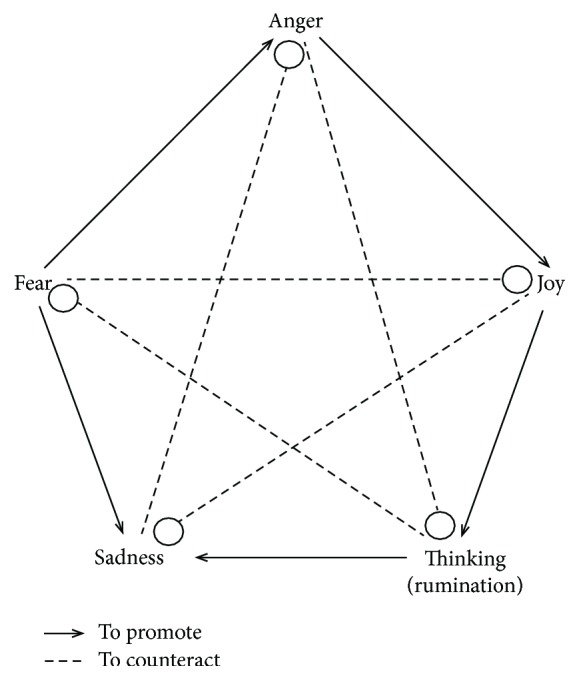Figure 1.

Relationships of mutual promotion and mutual restraint and the emotions of joy, thinking/anxiety (The original word for “thinking” in the Chinese literature is 思 [read as si]; 思 may indicate either the pure cognitive thinking and reasoning process that is nonpathogenic or the maladaptive repetitive thinking or ruminative thinking that is typically associated with negative emotion and has pathogenic potential. Thus, 思 may have different meanings in different contexts of the MPMC theory. The implication of maladaptive “thinking” in the MPMC theory of emotionality includes not only ruminative thought per se but also the negative, depression-like emotion associated with it. Therefore, in specific contexts, particularly the context discussed in this study, 思 indicates the ruminative or repetitive thinking that is closely related to rumination in modern psychology, which is defined as a pattern of repetitive self-focus and recursive thinking focused on negative cases or problems (e.g., unfulfilled goals or unemployment) that is always associated with the aggravation of negative mood states (e.g., sadness, tension, and self-focus) and has been shown to increase one's vulnerability to developing or exacerbating depression [4].), sadness, fear, and anger. The promotion relationships include the following: joy promotes thinking/anxiety, thinking/anxiety promotes sadness, sadness promotes fear, fear promotes anger, and anger promotes joy. The restraint relationships include the following: joy counteracts sadness, sadness counteracts anger, anger counteracts thinking/anxiety, thinking/anxiety counteracts fear, and fear counteracts joy.
